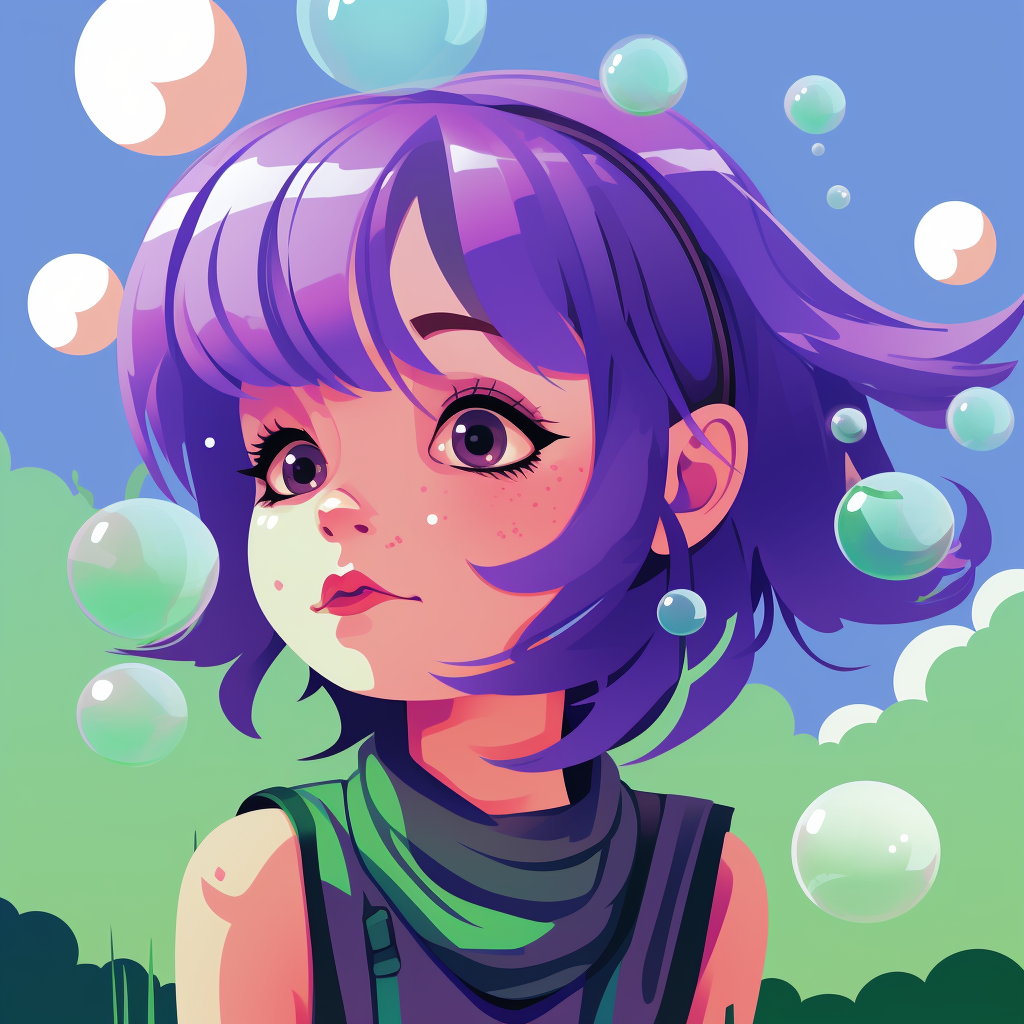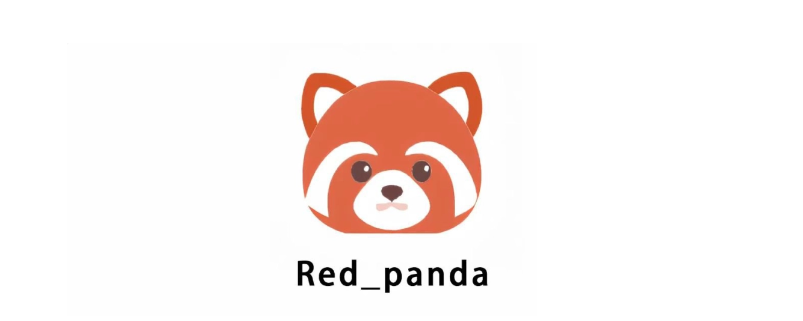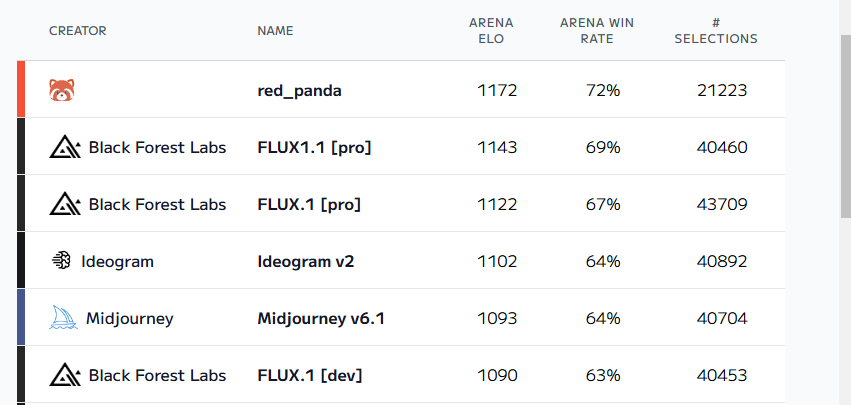“red_panda” model made a remarkable debut in the text-to-image arena

 Have you heard the news? A new star has emerged in the world of AI image generation! A mysterious little panda called 'red_panda' has burst onto the stage of AI image analysis, leaving many established competitors wide-eyed in shock. This playful little panda not only excelled in the crowdsourced AI analysis competition but also gave industry giants such as Midjourney, Black Forest Labs, and OpenAI a big 'bear hug.' The result? The little panda surprised everyone and pushed those 'old-timers' aside. It seems that in the jungle of AI, this little panda has found its bamboo kingdom!
Have you heard the news? A new star has emerged in the world of AI image generation! A mysterious little panda called 'red_panda' has burst onto the stage of AI image analysis, leaving many established competitors wide-eyed in shock. This playful little panda not only excelled in the crowdsourced AI analysis competition but also gave industry giants such as Midjourney, Black Forest Labs, and OpenAI a big 'bear hug.' The result? The little panda surprised everyone and pushed those 'old-timers' aside. It seems that in the jungle of AI, this little panda has found its bamboo kingdom!
So, how does the red_panda model actually perform in benchmark tests?
Since the redpanda model has only recently made its debut, it’s currently only available for experience in a competitive arena. The rules are simple: two anonymous models go head-to-head, and users just need to choose the image they like best, which they feel aligns more with the prompt. Let's take a direct look at how the redpanda model compares with other models on the same prompt.


In the final text-to-image test, the redpanda model achieved an excellent "report card." From the statistical results, we can see that the redpanda model scored an impressive 1172 points, firmly securing the top position, leading the second-place contender, Black Forest Labs' Flux1.1Pro, by about 30 Elo points. This performance not only highlights the formidable capabilities of the red_panda model but also underscores its absolute competitiveness in the field.

It's worth mentioning that this scoring system is derived from the ranking system used for chess players and has been widely adopted to compare the performance of various AI models. In practical application data, the redpanda model's win rate is 3% higher than that of Flux, showcasing its significant technical advantages in real-world usage. This suggests that the redpanda model excels in tasks involving text-to-image conversion, demonstrating strong stability and accuracy, further solidifying its leadership position within the industry.
What about the technical strengths of the red_panda model?
When it comes to performance, the red_panda model also shines, exhibiting impressively efficient capabilities. According to test data, the model can generate a high-quality image in an average of just 7 seconds.

This speed is over a hundred times faster than OpenAI's DALL-E 3, which is simply astonishing. Through comparative testing, we find that images generated by the red_panda model possess a remarkable level of realism, nearly eliminating the unnatural artifacts commonly seen in traditional AI-generated works. The images exude a sense of delicacy and authenticity, even surpassing the well-known Flux model, truly establishing itself as a new star in image generation.
Additionally, it’s important to note that the red_panda model demonstrates outstanding comprehension and execution capabilities regarding text prompts, accurately grasping user needs and generating images that meet expectations. This high level of efficiency not only inspires confidence but also reveals the model's exceptional proficiency in the realm of text-to-image transformation, leaving us all to admire the technical prowess behind it.
Where does the red_panda model come from, and who developed it?
Due to the fact that the "redpanda" model is currently still in a closed testing phase, it has not yet been made available to the public, and specific usage information has not been disclosed. This means that a wide array of users and developers must patiently wait until the model is officially released. Regarding the origins of redpanda, including which company developed it and when it will officially launch, it remains a mystery, with no authoritative sources providing confirmation.
However, there are various speculations and discussions within the industry about the development team behind it. Many people are speculating whether this is a new product from a well-known tech company or a refined version of an already mature model. Anticipation and curiosity about this model are growing, as it seems that everyone hopes to quickly unveil this mystery and learn about its advanced technological background and team capabilities.
Meanwhile, this uncertainty has provided rich topics for industry discussion and exploration, prompting various media outlets and AI enthusiasts to express their personal insights, further igniting widespread attention on the future development of AI image generation technology.
Some believe it may be a spin-off of Midjourney-V7.

Others speculate that it could be a new product from a Chinese technology company.

There are even guesses that it might be the 'Medium Cup' version of Stable Diffusion 3.5.

As more AI laboratories increasingly utilize community benchmarks to build anticipation before releases, we can expect to see more information disclosed soon. There's no need to rush; we can simply wait and watch as the developers come forward to claim their creation.
The red_panda model is elevating industry standards.
In this fast-evolving era of AI generation technology, the emergence of the red_panda model raises questions about its origins and the impact of its leading technology on the overall direction of industry development.
However, we are clear that the appearance of the redpanda model has once again pushed the standards of the industry higher, compelling related teams to ramp up their technological research and development in AI image generation. Just like XXAI, which continues to innovate and optimize versions in an era of rapid AI model iteration, the XXAI platform now encompasses as many as popular AI models, providing users with an integrated solution to various problems, just like the highly competitive redpanda model.
